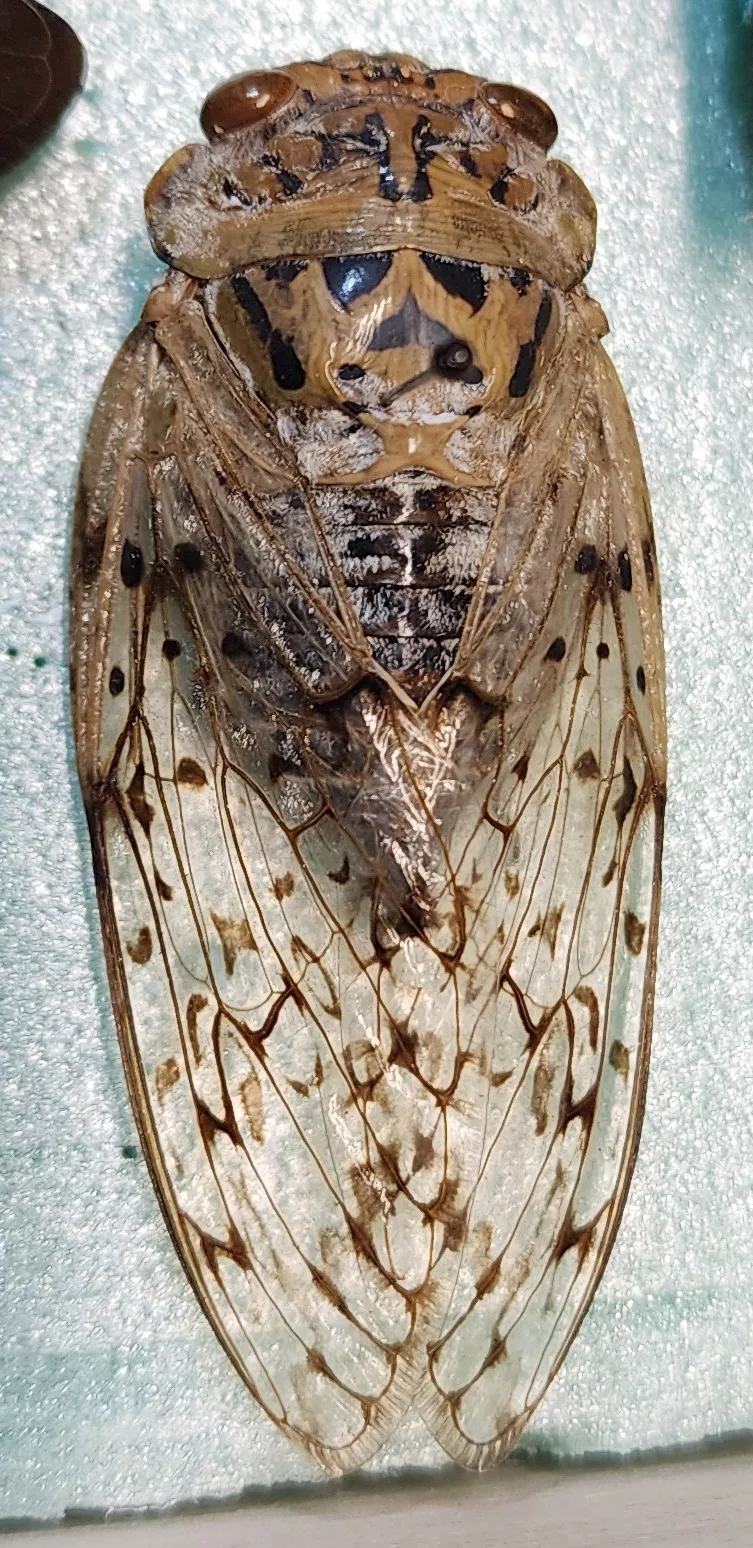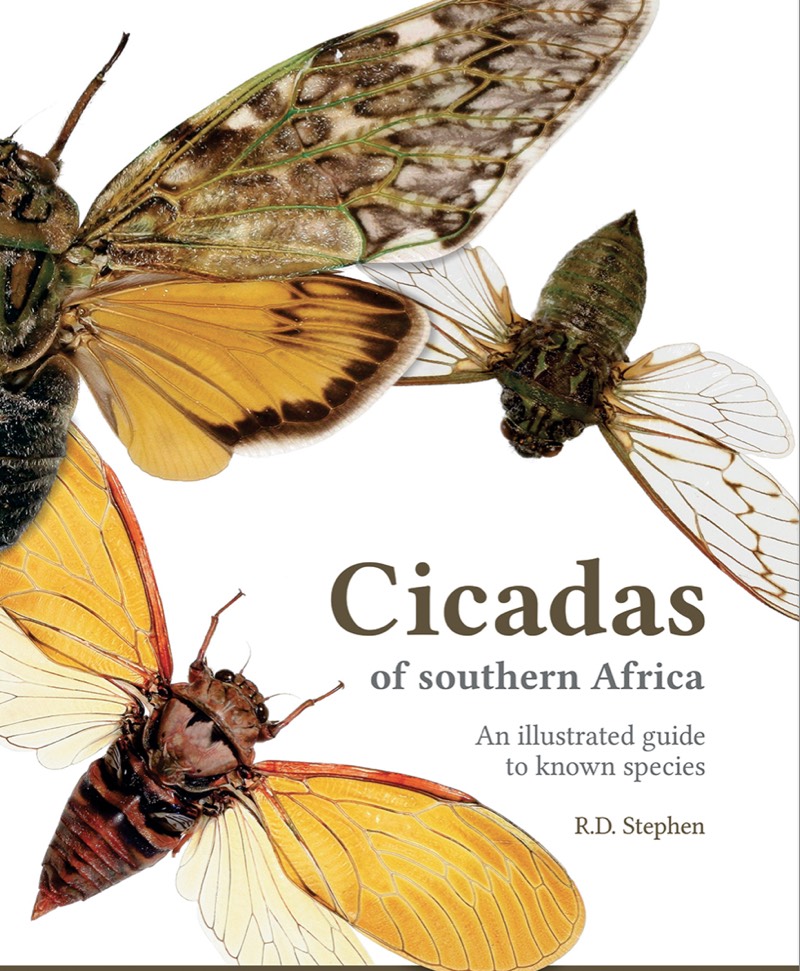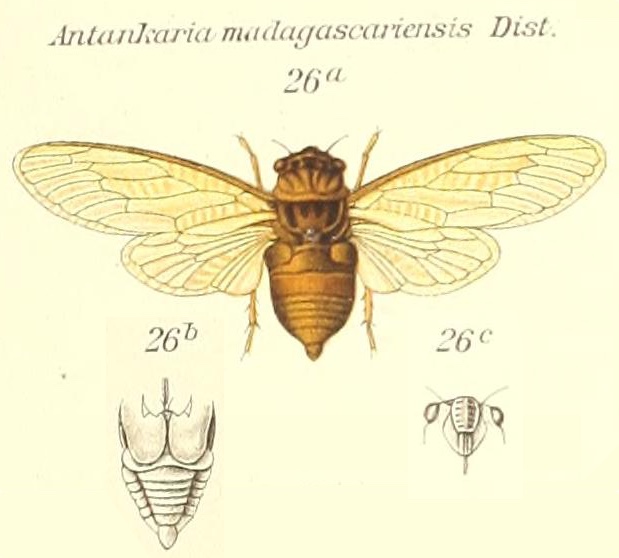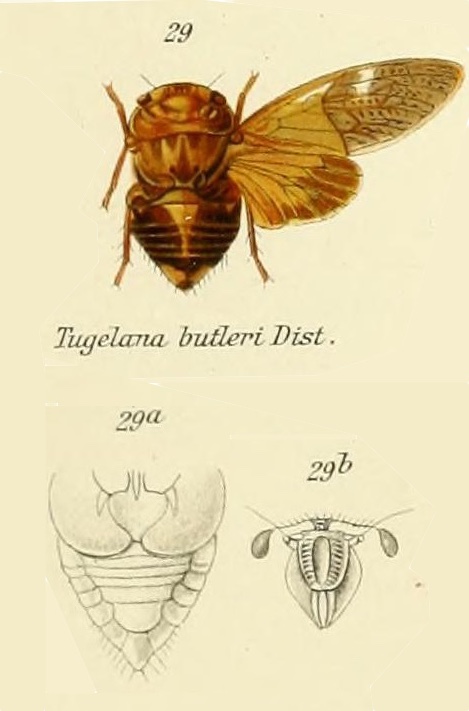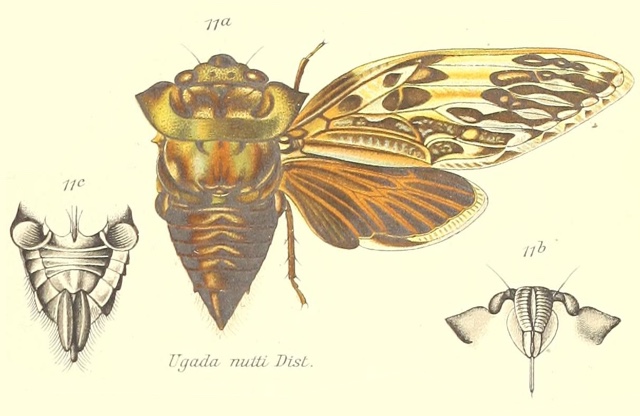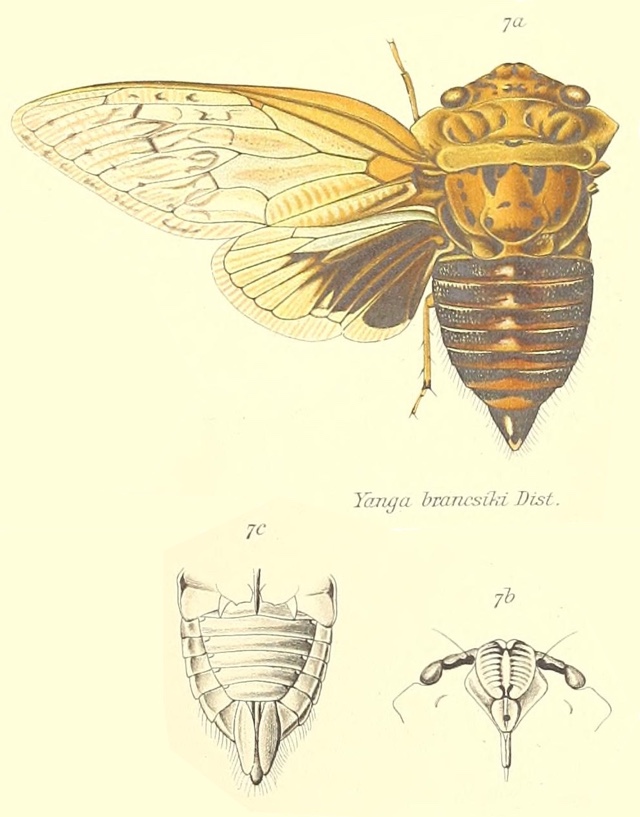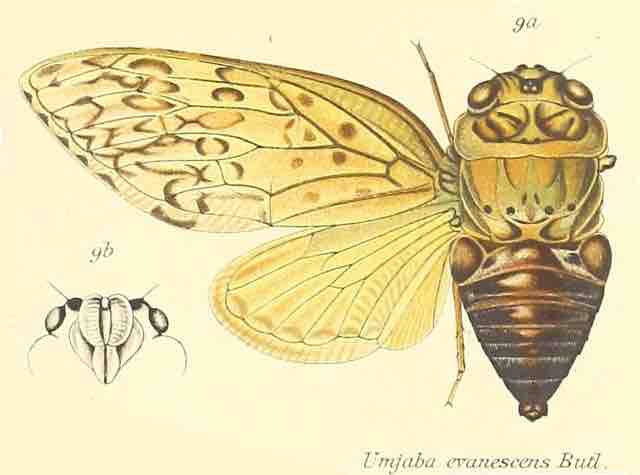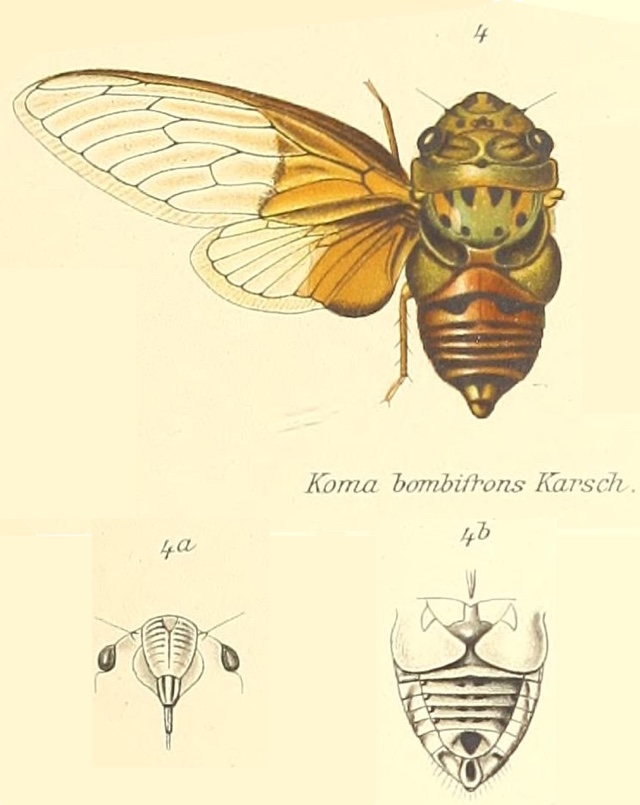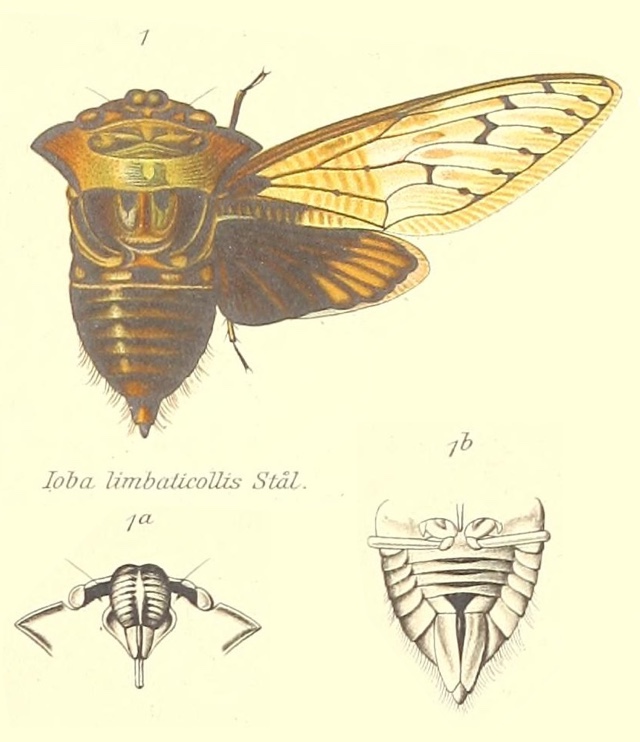Cicadatra flavicollis Horváth, 1911, is a cicada found in Egypt.
Its name changed from Psalmocharias flavicollis to Cicadatra flavicollis, when it was moved from the Psalmocharias Kirkaldy, 1908 genus (which still exists) to the Cicadatra Kolenati, 1857 genus.
Scientific classification:
Family: Cicadidae
Subfamily: Cicadinae
Tribe: Cicadatrini
Genus: Cicadatra
Species: Cicadatra flavicollis Horváth, 1911
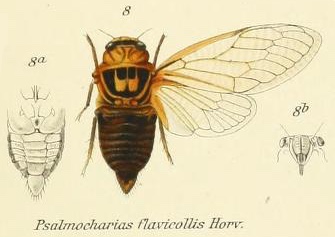
They image says Psalmocharias flavicollis, but the newest name of this cicada is Cicadatra flavicollis.
Cicadatra genus description by W. L. Distant from Genera Insectorum, 1914:
Characters. — Head (including eyes) narrower than base of mesonotum, its length less than width between eyes, but about as long as pronotum; pronotum much shorter than mesonotum, its lateral margins more or less obliquely straight, its posterior lateral angles a little ampliated; mesonotum convex; abdomen in male as long as space between apex of head and base of cruciform elevation; tympanal coverings both narrower and shorter than tympanal orifices; opercula in male short and transverse, not extending beyond the base of abdomen; anterior femora spined beneath; tegmina and wings hyaline, the first sometimes a little maculate, its greatest width more than a third of length, apical areas eight; wings with six apical areas.
References:
- The illustration and description comes from the journal Genera Insectorum, and a specific article from 1914 by W. L. Distant titled Homoptera. Fam. Cicadidae, Subfam, Gaeaninae. Read it on the Biodiversity Heritage Library website.
- Species name verification comes from Allen Sanborn’s Catalogue of the Cicadoidea (Hemiptera: Auchenorrhyncha).
